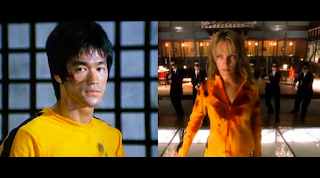The public sphere, according to Jürgen Habermas, is conceptual idea where people debate matters freely and openly (Boeder 2005). The use of hyperlinks in blog favors flow of ideas and rise of ‘networked public sphere’ (Boeder 2005). The comic below creatively illustrated this.
 |
(Rupakson 2012)
(image from http://www.worthofweb.com/blog/case-study-blogosphere-by-james-surowiecki/) |
However, in practice, this notion of blogosphere as public sphere is more ideal with involvement of corporate and government interests. Blogs are increasingly used as platform for advertising (Boeder 2005). People are being paid to write blogs to promote products, like mom bloggers (Local 10 2012). Boeder (2005) noted that ‘public sphere is deeply wounded by the intrusion of PR’. Opinions are staged which shaped people’s beliefs (Boeder 2005). State influence is another problem, which government monitors blogs and filter information. An example is censorship of sensitive information on microblogging site Sina Weibo in China (BBC 2013). That is further restrained by digital divide, which not everyone have access to Internet (Etlinget et al. 2009). All these brings to the conclusion that blogosphere is still ‘elite-controlled public sphere’ (Etlinget et al. 2009), which the powerful one have money and means to control opinions. Even though blogoshpere cannot act as independent and impartial public sphere, what it offered bring us one step closer.
References
BBC News 2013, ‘The astonishing speed of Chinese censorship’, BBC, 27 March, retrieved 22 August 2013, <http://www.bbc.co.uk/news/world-asia-china-21743499>
Boeder, P 2005, 'Habermas’ heritage: The future of the public sphere in networked society', First Monday, vol. 10, no. 9, retrieved 22 August 2013, <http://firstmonday.org/ojs/index.php/fm/article/view/1280/1200>
Etling, B, Kelly, J, Faris, R & Palfrey P 2009, Mapping the Arabic Blogosphere: Politics, Culture and Dissent, Berkman Center for Internet and Society, Harvard University, retrieved 21 August 2013, <http://cyber.law.harvard.edu/sites/cyber.law.harvard.edu/files/Mapping_the_Arabic_Blogosphere_0.pdf>
Lee, JK 2006, ‘The Blogosphere and the Public Sphere: Exploring possibility of the blogosphere as a public sphere’, International Communication Association conference papers, EBSCOhost, retrieved 21 August 2013
Local 10 2012, 'Companies pay mom bloggers thousands', Local 10, 6 Feb, retrieved 22 August 2013, <http://www.local10.com/news/Companies-pay-mom-bloggers-thousands/-/1717324/8603210/-/f99g77/-/index.html>
Rupakson 2012, 'Case Study: Blogosphere by James Surowiecki', Worth of Web Academy, retrieved 21 August 2013, <http://www.worthofweb.com/blog/case-study-blogosphere-by-james-surowiecki/>



